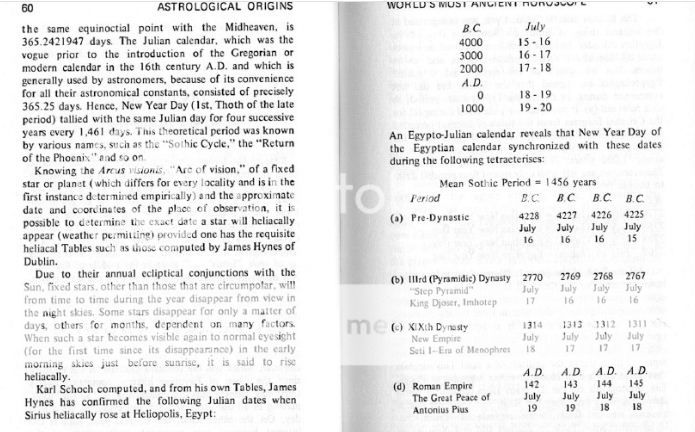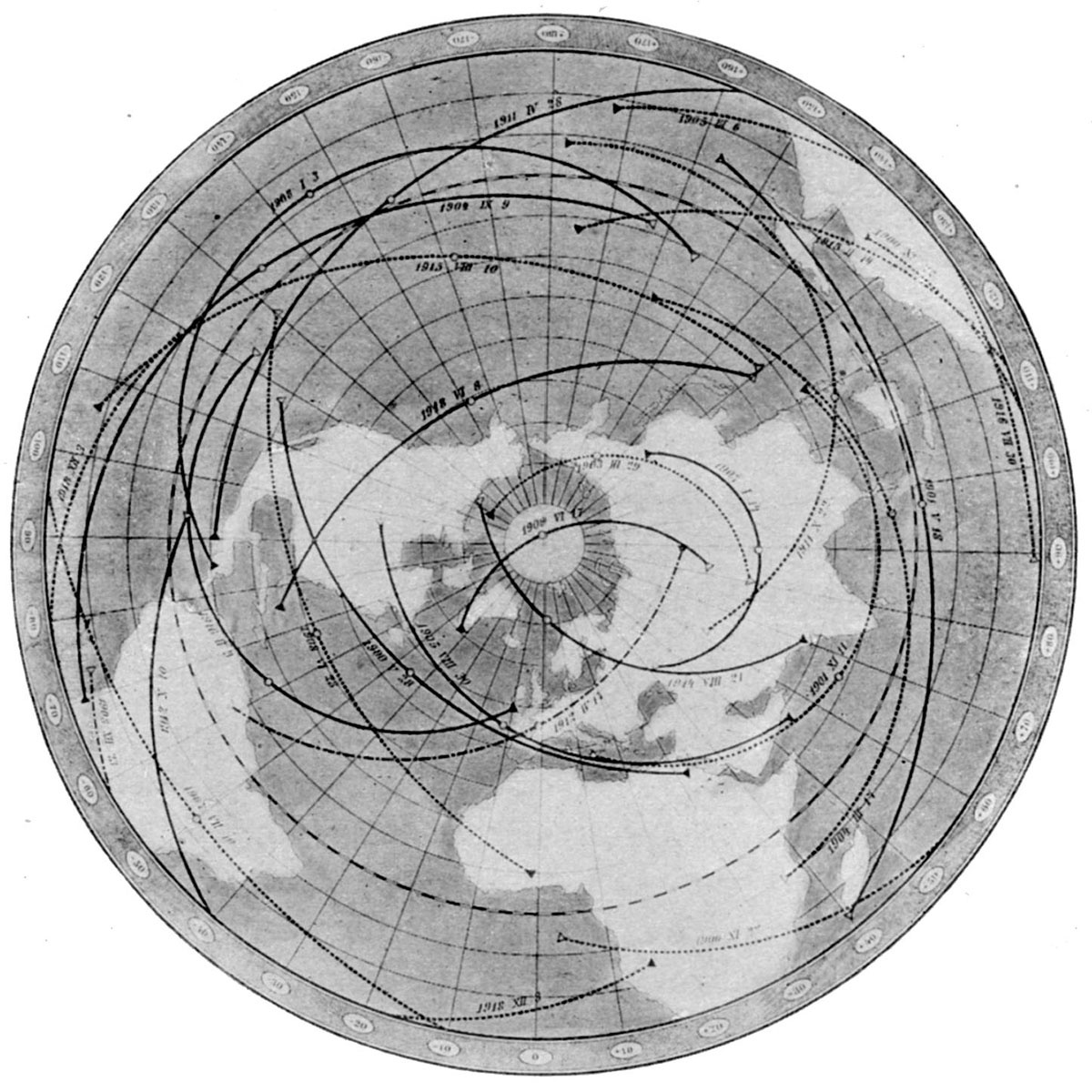SIRIUS - EARTH DISTANCE: LESS THAN 50 KILOMETERSThe acceleration of the rate of axial precession is a basic fact of science:
https://www.theflatearthsociety.org/forum/index.php?topic=30499.msg1776108#msg1776108And the data is this:
Simon Newcomb included a “constant” in his precession formula to get it to match the increasing rate of precession that was observed leading up to his era.
The “constant” amount was .000222 arc seconds per year.
In 1900 the precession rate was 50.2564 (USNO).
In 2000 the precession rate was 50.290966 (AA).
This shows us the precession rate has increased over the past 100 years by .0346 for an average of .000346” per/year. Comparing this to Newcomb’s 0.000222” figure, we can see the actual rate of change has not simply increased at a “constant” rate – it has increased at an “exponential” rate.
A TOTAL AND COMPLETE DEFIANCE OF NEWTONIAN ORBITAL MECHANICS.
The mass of the Sun/Moon/planets has not increased (we all know that the mass of the Sun is actually constantly decreasing).
The orbital distances are the same (and the Moon is constantly receding from the Earth).
Precession has nothing to do with the law of attractive gravitation.
HOW or WHY does Sirius keep up so precisely with the exponentially increasing rate of precession?
How can Sirius' proper motion stay synched up so precisely with precession, when the rate of precession itself is changing?
If any local force in here the "heliocentrical" solar system drove up the rate of precession, it would NOT also drive up the proper motion of Sirius across the sky. In the official theory of astrophysics, Sirius is 8.6 LIGHT YEARS from Earth.
THAT IS 81 TRILLION KILOMETERS.
And yet it keeps up precisely with the exponential increase of the rate of precession.
Dr. Jad Buchwald (Caltech):
Sirius remains about the same distance from the equinoxes—and so from the solstices— throughout these many centuries, despite precession.
".... despite precession, Sirius and the solstice must remain about the same distance in time from one another during most of Egyptian history."
The distance from Sirius to Earth cannot be measured in light years, millions of kilometers, thousands of kilometers, or even in the hundreds of kilometers: both the Sun and Sirius are linked/connected by the SAME FIELD, which makes it possible for both these heavenly bodies to precisely keep up with the exponentially increasing rate of precession.
Moreover, here we have a basic proof of the existence of the second dome (shield/ether barrier): the first dome separates the Earth's atmosphere from the rotational gravitational force acting upon the Sun/Moon/Shadow Moon/Black Sun/planets/stars; the second dome encloses the aether/ether field necessary to account for the rotation of the planets/stars.
The fact that Sirius seems to maintain its position relative to the position of the sun was a surprise to most scientists (aware of precession), when it was first noticed by the French scientific community following the Egyptian discoveries of Napoleon (and the Dendera Zodiac) in the early 1800’s. Perhaps to save the lunisolar theory of precession, or at least to make sense of physics as then taught, physicist, astronomer, mathematician Jean-Baptiste Biot (21 April 1774 – 3 February 1862) proclaimed that this phenomenon was an oddity of the latitude and horizon around Dendera, meaning it just seemed as if Sirius was immune to the effects of precession. And to this day this is the assumption of many astronomers and astrophysicists. Physicist Jed Z. Buchwald, professor of history and science and technology (Caltech and MIT) commented on this topic in his article Egyptian Stars Under Paris Skies, when he noted:
"The rising of Sirius, the brightest star in the heavens and important to Egyptians as the signal for the annual flooding of the Nile, was assumed by the French physicists to move with relation to the sun as do the constellations of the zodiac.
It does not, however, as we see here."

The curved line dividing the lit from the dark regions represents the horizon near Dendera. The blue lines show the locations of the ecliptic with respect to the horizon at five helical risings separated by hundreds of years. The vernal points mark the equinoxes at these times, and the circled numbers on the lower right indicate the corresponding positions of Sirius.
Sirius remains about the same distance from the equinoxes—and so from the solstices— throughout these many centuries, despite precession.However, wishing to deduce an establishment of a Sothic year of 365.25 days based on the flooding of the Nile in relation to the remarkable astronomical phenomenon of the helical rising of Sirius is in the words of the Egyptologist R.A. Schwaller de Lubicz, "a feat of skill which would dignify clairvoyance rather than ratiocination."
R.A. Schwaller de Lubicz, “Sacred Science”, Inner Traditions (1982)
At this point it would be interesting to mention that Otto Neugebauer, who wrote extensively about Babylonian astronomy, also discussed the so-called Solstice-Equinox-Sirius texts, which formed part of the “Astronomical Diaries”. These texts list equinoxes, solstices, heliacal risings and settings of Sirius from the period of around 600 BCE and around 330 BCE. Apparently, the position of Sirius relative to the solstices and equinoxes did not change over time with precession.
http://saturniancosmology.org/files/calendar/precession.txtIt is recognized that from the beginning of the empire and during the entire dynastic period the rising of Sirius with the Sun always occurred around the time of the Summer solstice.
The implication of this astronomical fact is best explained by Jed Z. Buchwald, a distinguished Professor of History and Science, in his paper “Egyptian Stars under Paris Skies” (Caltech, Engineering & Science No. 4, 2003), where he discusses the meaning of the Zodiac that has been engraved in the ceiling of the temple of Dendera in Egypt:
“The solstice is, after all, extraordinarily hard to pin-point by observation, and in any case it was known from Greek texts that the Egyptians were particularly concerned with the heliacal rising of the brightest star in the sky, Sirius—that is, with the night when Sirius first appears, just before dawn. In Egyptian prehistory this event certainly preceded the annual flooding of the Nile, which was of obvious agricultural importance. Would not precession have moved Sirius along with the zodiacal stars, eventually decoupling its heliacal rising from the solstice, and so from the annual inundation? We know today that the inundation occurs after the June beginning of the rainy season in Ethiopia, where the Blue Nile rises. And yet Sirius’ heliacal rising remained a central marker of the year throughout Egyptian history.” (p 25)
".... despite precession, Sirius and the solstice must remain about the same distance in time from one another during most of Egyptian history. Indeed they do, though it’s doubtful that Burckhardt and Coraboeuf had thought it through. Because of Sirius’ position, and the latitudes at which the Egyptians observed the sky, both Sirius’ heliacal rising and the summer solstice remained nearly the same number of days apart throughout Egyptian history even though the zodiac moves slowly around the ecliptic." (pp 29)
Buchwald, who produced a revealing diagram on the ‘Heliacal Risings of Sirius’ in relation to the vernal points (for the period of 2900 BCE to 2941 CE at intervals of 1460 years) using TheSky software, makes it very clear that "Sirius remains about the same distance from the equinoxes - and so from the solstices - throughout these many centuries, despite precession".
According to the current theory of lunisolar precession the pole, and therefore the equator of the Earth is supposed to “wobble” over a period of roughly 25800 years relative to the position of the fixed stars and the Sun. In other words, if we were to imagine the Earth ‘fixed’ in its revolution around the Sun at the time when Sirius is in conjunction with the Sun (e.g. during the Summer solstice), an observer would not only notice changes in the declination of Sirius and the other stars, but simultaneously equal changes in the declination of the Sun. In practice, however, Sirius does not show any significant variations in its position relative to the Summer solstice.
In order to account for
the unusual motion of Sirius, which is minimal relative to the Summer solstice and exceptionally high with respect to the stars of the Zodiac, Karine Gadré, the Associate Researcher at the Department of Astrophysics of the MidiPyrenees Observatory in Toulouse, France offers the following explanation:
“The low change in the celestial coordinates of Sirius comes from its high proper movement, which partly compensated the effects of precession under the Dynastic Period. […]
In order to better understand how the proper movement of Sirius can partly compensate the effects of precession, do not only take into account the numerical values of the speed vector. Take also into account the position of Sirius on the celestial vault at a given instant and the direction of the speed vector.”
Now we know that the proper motion of Sirius (i.e. of the Sirius system) over a period of some 5400 years is less than 2°:
"For a long time astronomers had been noticing
anomalies in Sirius' proper motion; this motion, well known since Halley's time is equal to 0.0375" in RA (Right Ascension) and to 1.207" in D, (Declination), which gives a yearly resultant motion of 1.32" in the direction of 204°, which is noticeably to the south. In 1834, Bessel showed that the anomalies consisted mainly of deviations between the star's theoretical position and its actual position; these distinctly periodic differences, especially in right ascension, may be as great as 0.321", which is a considerable amount with regard to meridian observations. Overall, instead of moving through space in a straight line,
Sirius appears to display a wavy trajectory."
Dr. P. Blaize, Le Compagnon de Sirius, Bull. de la Société astronomique de France (1931)

An Egypto-Julian calendar reveals that New Year Day (beginnings of Sothic Cycles) of the Egyptian calendar synchronized with the following tetraeterises:
Heliopolis, Egypt:
4225 BC July 15
2767 BC July 16
1311 BC July 17
145 AD July 18
This proves that Sirius is not precessing like other stars, since in this 4,370 years time period, the calendar dates have only changed by 3 calendar days!
Moreover, the heliacal rising of Sirius appears to keep up with the calendar.
This heliacal rise of Sirius also appears to be a fixed date according to the Julian calendar for over 4,000 years.
HOW or WHY does Sirius keep up so precisely with the exponentially increasing rate of precession?
How can Sirius' proper motion stay synched up so precisely with precession, when the rate of precession itself is changing?
If any local force here in "heliocentrical" solar system drove up the rate of precession, it would NOT also drive up the proper motion of Sirius across the sky.

An Egypto-Julian calendar reveals that New Year Day (beginnings of Sothic Cycles) of the Egyptian calendar synchronized with the following tetraeterises:
Heliopolis, Egypt:
4225 BC July 15
2767 BC July 16
1311 BC July 17
145 AD July 18
This proves that Sirius is not precessing like other stars, since in this 4,370 years time period, the calendar dates have only changed by 3 calendar days!
Moreover, the heliacal rising of Sirius appears to keep up with the calendar.
This heliacal rise of Sirius also appears to be a fixed date according to the Julian calendar for over 4,000 years.
HOW or WHY does Sirius keep up so precisely with the exponentially increasing rate of precession?
How can Sirius' proper motion stay synched up so precisely with precession, when the rate of precession itself is changing?
If any local force here the "heliocentrical" solar system drove up the rate of precession, it would NOT also drive up the proper motion of Sirius across the sky.














